 January 22, 2015 John E. Ross, KD8IDJ, Editor
| ||||||||
ARRL Board Okays Changes to DXCC Program, VHF and Above Contesting Rules The ARRL Board of Directors has tweaked the DX Century Club (DXCC) rules to clarify and expand their recognition of remotely controlled station technology. It has also added a rule that puts greater ethical responsibility on operators with respect to remotely controlled operation. In addition, the Board adopted changes to the ARRL VHF/UHF contest rules that are aimed at encouraging greater participation. The Board took the actions during its annual meeting January 16-17 in Windsor, Connecticut.
The DXCC Rules changes, which affect Section I, subsections 8 and 9, explain and extend how contacts with remotely controlled stations now may be applied toward the DXCC award. According to ARRL CEO David Sumner, K1ZZ, the changes are subtle but significant. The modified rules make clear that contacts with legally licensed, land-based, remotely controlled stations count for DXCC, but the control point -- the operator's location -- of a remotely controlled station no longer has to be land based; the operator can be literally anywhere. "It has always been permitted for a QSO to count for both stations, if either station was operated remotely from a control point within the same DXCC entity," Sumner explained. "Now the location of the operator doesn't matter; the operator could be on the far side of the Moon, if he or she could figure out how to remotely control a station on land back on Earth from there." Transmitter location continues to define a station's location, and, for DXCC purposes, all transmitters and receivers must be located within a 500 meter diameter circle, excluding antennas.
Under the old rules, if either station was operated from a control point in another DXCC entity, the contact did not count for DXCC for either station. "This was unenforceable unless someone was transparent about what they were doing," Sumner said. The Board further adopted a new rule, now Subsection 11 (subsequent rules have been renumbered accordingly), that acknowledges the reality of the technology enabling remote operation, and it puts greater responsibility on individuals when it comes to applying that technology ethically and responsibly.
"Issues concerning remotely controlled operating and DXCC are best dealt with by each individual carefully considering the ethical limits that he/she will accept for his/her DXCC and other operating awards," the new rule states. It adds, in part, "the owner of these achievements needs to be comfortable standing behind his/her award and numbers. Peer attention has always been a part of awards chasing, of course, but in these times with so many awards and so many players, it is more important than ever to 'play the game ethically.'" Subsection 11 acknowledges that technological advances "add to the difficulty in defining rules for DXCC," but stresses that the intent of the rules is what's important. "It will continue to be up to the operator to decide what types of legal remote control operating he/she will use (if any) to contribute to an operating award," the new rule concludes. VHF and Above Contest Rules Revised The Board also adopted amendments to the General Rules for ARRL Contests Above 50 MHz to encourage greater participation and band utilization. The changes become effective with the 2015 June ARRL VHF Contest. The revisions stemmed from recommendations offered by the Board's Programs and Services Committee's ad-hoc VHF and Above Revitalization subcommittee, composed of active VHF/UHF contesters, and they received strong support from the VHF/UHF community.
The subcommittee was charged with developing recommendations to increase the level and breadth of ARRL VHF and Above contest participation and encourage operation on lesser-used bands. As a start to the process, the Board approved three changes that will permit the use of assistance for all operator categories, with no effect on entry category; permit self-spotting for all operator categories, and allow single operators to transmit on more than one band at a time. The changes will permit assistance in arranging contacts, but not in conducting contacts. They will, for example, allow a station to announce its location in a chat room, on a repeater, or even via e-mail. In other actions, the Board instructed the HF Band Planning Committee -- which will soon solicit members' comments on proposed changes to the ARRL HF Band Plans -- to include the possibility of requesting that the FCC add RTTY and data privileges for Novices and Technicians on 15 meters. Other Business The Board also
ARRL Roanoke Division Director Dennis Bodson, W4PWF, Retires ARRL Roanoke Division Director Dennis Bodson, W4PWF, has stepped down, and Vice Director Dr Jim Boehner, N2ZZ, has succeeded him. Bodson announced his retirement on January 16 -- before the official end of his term next January 1 -- at the Board of Directors' Annual Meeting in Windsor, Connecticut.
Fellow Board members gave Bodson a standing ovation in recognition of his years of service to the League. The Board elected Bodson as an Honorary Vice President. Bodson served as Roanoke Division Vice Director from 1993 through 2000 and as Director from 2001 until his retirement. Earlier in the meeting, ARRL CEO David Sumner, K1ZZ, had presented Bodson with his 60-year ARRL membership certificate. An ARRL Life Member, Boehner served as ARRL South Carolina Section Manager from 2003 until 2009, when he was elected Roanoke Division Vice Director. He was re-elected in 2013. Boehner is an avid DXer and has achieved DXCC Honor Roll and 5-Band DXCC. Originally from New York, Boehner is in private medical practice in Aiken, South Carolina. ARRL President Kay Craigie, N3KN, has appointed Bill Morine, N2COP, of Wilmington, North Carolina, to complete the remainder of Boehner's term as Roanoke Division Vice Director, effective immediately. An ARRL Life Member, Morine served as North Carolina Section Manager from 2010 until 2014, and is a past ARRL Public Relations Committee chairman. Morine was the 2001 recipient of the ARRL Philip J. McGan award for public relations. ARRL Executive Committee Approves Education & Technology Program Grants The ARRL Executive Committee has approved Education & Technology Program (ETP) station and progress grants to five schools. Two schools received ETP station grants at an estimated total of $3600, while three others already enrolled in the program received progress grants totaling $800.
Receiving progress grants were Forest Knolls Elementary School in Silver Spring, Maryland; Ankeny Centennial High School in Ankeny, Iowa, and South Hopkins Middle School in Nortonville, Kentucky. Forest Knolls requested funds for an additional antenna for a second school club station. Ankeny Centennial High School asked for additional funds to purchase antenna supplies (wire and coaxial feed line) for a student project to build a portable antenna for Field Day and other activities. The school's Amateur Radio club boasts some 30 active student members. South Hopkins Middle School sought a progress grant to fund the purchase of fox hunt transmitters and handheld transceivers to conduct school Amateur Radio Direction Finding (ARDF) activities with the support of local ham radio clubs. The goal of the ARRL Education & Technology Program, directed by Education Services Manager Debra Johnson, K1DMJ, is to facilitate the integration of wireless technology into participating school curricula. The League provides curriculum development support, resource libraries, ham station equipment grants and progress grants, and ARRL Teachers Institute in-service training. The current -- and expanding -- count of ETP schools/teachers stands at 663. ARRL Submits Comments to FCC on WRC-15 Draft Recommendations The ARRL has commented on two draft recommendations of the FCC's 2015 World Radiocommunication Conference (WRC-15) Advisory Committee (WAC) as well as on a draft proposal provided to the FCC by the National Telecommunications and Information Administration (NTIA).
"[The] failure to even superficially address the protection of all existing services -- including the Amateur and Amateur-Satellite services -- is glaring," the ARRL said. The WAC's so-called "View A" -- to make no change in the allocation -- in part said, "The secondary nature of the Amateur Service allocation requires flexibility in frequency selection to permit an Amateur Service licensee to use the allocation and fulfill his or her obligation not to cause harmful interference to the numerous primary services, including the FSS [Fixed-Satellite Service]." ITU-R Resolution 233, adopted at WRC-12, spelled out explicit requirements for the studies of the candidate bands, including sharing and compatibility studies with services already having allocations. As the League noted in its comments, a relevant ITU-R Recommendation stated that additional sharing with the Amateur and Amateur-Satellite services should not introduce high signal density services in the spectrum at issue, and that sharing studies should consider the Amateur and Amateur-Satellite services' needs for "weak-signal" reception.
Mimosa Networks has petitioned the FCC to permit unlicensed Part 15 wireless broadband services in the 10.0-10.5 GHz band. In comments last year, the ARRL called Mimosa's Petition "fatally flawed" and said it should be dismissed. Among other things, the League told the FCC last year that Mimosa's Petition was inconsistent with a US footnote in the domestic Table of Allocations, and that alone was sufficient reason for the Commission to quash Mimosa's request. In its comments on WRC-15 Agenda Item 1.12, the League said that Mimosa did not raise an objection to the WAC's initially adopted position until months after the comment deadline. The ARRL said the FCC should use its original position -- and not a later one that includes Mimosa's arguments -- as the baseline for any discussions with federal agencies to reconcile the agenda item. The League also said the NTIA was correct in proposing that regulatory changes for nanosatellites and picosatellites be addressed under standing Agenda Item 7 at WRC-19. Read more. ARES Volunteers in Ohio Activate Following Loss of 911, Telephone Services ARES volunteers in northeast Ohio activated on January 13 after 911 and other telephone services went down in six counties due to a power failure at a major AT&T center in Akron. The outage was blamed on a The Medina County Emergency Management Agency requested ARES communication support with surrounding counties, with the Ohio Emergency Operations Center (EOC) in Columbus as a backup. At the same time, EMA Directors in Stark, Summit, Portage, Mahoning, and Columbiana counties alerted their ARES organizations. Ohio ARRL Section Emergency Coordinator Stan Broadway, N8BHL, also requested activation of RACES station W8SGT at the Ohio EOC. Communication was established on 75 meters with several county Emergency Coordinators. The EOC also was able to link up with the Stark County 2 meter repeater, some 135 miles away. The Amateur Radio activation terminated after 4 hours, once the 911 system was brought back online. "My thanks to all who were involved!" Broadway said. "Our response was quick and professional and was a great opportunity to show the value of Amateur Radio." Read more. Michigan Passes, Governor Signs Antenna Accommodation Legislation Ten years of work within the ARRL Michigan Section have culminated in an Amateur Radio antenna bill that mirrors the "reasonable accommodation" provisions of the PRB-1 federal pre-emption policy. Michigan Governor Rick Snyder signed the measure, Senate Bill 0493, into law on January 15, creating Public Act 556. Senator Rick Jones sponsored the bill. ARRL Michigan Section Manager Larry Camp, WB8R, said Michigan is the 31st state to have a PRB-1 bill on its books. "The current PRB-1 Team has been working for 3 years to get this accomplished," he said. "Our bill endured four votes on its way to becoming law -- Senate and House committees and the Senate and House floors. Each vote was unanimous."
An Amateur Radio Service station antenna structure may be erected at heights and dimensions sufficient to accommodate Amateur Radio Service communications. Regulation of an Amateur Radio Service station antenna structure by a local unit of government must not preclude Amateur Radio Service communications. Rather, it must reasonably accommodate those communications and must constitute the minimum practicable regulation to accomplish the local unit of government's legitimate purpose. The new law also provides for an advisory committee that may be established jointly by the Michigan Section and other state organizations, such as the Michigan Municipal League and the Michigan Township Association. Camp said the PRB-1 Team believes the advisory committee will be an important tool in situations where community officials know little or nothing about Amateur Radio. Read more. Navassa DXpedition Team Poised to Offer "Once in 32 Years" Opportunity The K1N Navassa DXpedition team hopes to be on the air with up to eight stations in less than 2 weeks, offering a "once in 32 years" opportunity to work the most-wanted DXCC entity. It's been 22 years since the last Navassa operation, and the US Fish and Wildlife Service (USFWS), which is responsible for the island, will "As soon as the USFWS has landed on the island and declared it is safe to proceed, we will start the helicopter flights and commence operations," the K1N team said this week in a media release. "We hope to have a basic camp established by the end of the first day, and, if things go extremely well, we hope to have several stations on the air by nightfall on the second day," the K1N media release said. The K1N team will take along a VHF/UHF transceiver and an Arrow antenna in the hope of making some satellite contacts via FO-29. AMSAT has provided the DXpedition with a Yaesu FT-817 transceiver and associated equipment, as well as pass predictions, an operational plan, and training. The K1N stations will always operate split frequency, listening up or down, depending upon the band plan. Stations should avoid transmitting on the DXpedition's frequency. Read more. EP6T Team Pleads for "More Respect" from Operators The EP6T DXpedition team now on Iran's Kish Island (IOTA AS-166) has implored operators hoping to work the rare DXCC entity to show more respect and exhibit better operating manners. The EP6T team said it's aware that the majority of contacts have been with Europe, North America, Oceania, and Asia, and the operators are doing their best to work other regions, but that 10 days may not be long enough to satisfy the surging demand, and "ham spirit" has been hard to find.
"Jammers calling with fake calls and disrespecting the operators, sending disgraceful e-mails, and calling us names is sometimes too much for us," the EP6T team said. "Please, a little more respect is needed." The operators report that many stations from Japan have made it through on the low bands and some North American stations have gone into the log on 80 meters. So far, though, only KV4FZ and NP2X have been successful on 160, and even Europe has been hard to work at sunrise. The team has four receive antennas and has intended to focus on 160 meters, but, they said, "when conditions are bad, there's nothing we can do." The Rockall DX Group is sponsoring the DXpedition to Iran, which is #33 on ClubLog's DXCC Most Wanted List. -- Thanks to The Daily DX Fox-1A Satellite Launch Date Launch Set for August AMSAT has announced that its Fox-1A satellite will launch on August 27 from Vandenberg Air Force Base, California, on a United Launch Alliance Atlas 5 National Reconnaissance Office flight. Fox-1A will include an FM transponder with an uplink frequency of 435.180 MHz, and a downlink frequency of 145.980 MHz. The first phase of the Fox series 1-Unit CubeSats will allow simple ground stations using hand-held transceivers and simple dual-band antennas to make contacts. The Fox-1 CubeSats also will be able to transmit continuous telemetry during normal transponder operation. The satellites will feature 200 bps telemetry in the audio spectrum below 300 Hz. AMSAT said other satellites in its Fox series AMSAT has purchased the Fox-1C launch opportunity, which was not funded by the CSLI ELaNa program, and fundraising to cover the $125,000 cost is under way via the AMSAT-NA website and the FundRazr crowdsourcing website. Read more. -- Thanks to AMSAT News Service via the Fox-1 Team Australian "Pico Balloon" Piques Ham Radio Interest A foil "party balloon" released in late December from Melbourne, Australia, carrying an HF Amateur Radio payload, ended its journey on January 16 off the east coast of Africa near Madagascar. Andy Nguyen, VK3YT, of Kensington, Victoria, Australia, released his PS-30 "pico balloon" on December 27, hoping that it might circle the globe. Its 13-gram Amateur Radio payload included a solar-powered 25 mW transmitter, sending telemetry on 30 and 20 meters using WSPR and JT9 digital modes. Many radio amateurs tracked the balloon's progress during its 20-day flight.
"There was some bad weather in the region, but speculations also include the possibility it was brought down (attacked) by the naughty penguins on the Island," Nguyen quipped, referring to the 2014 animated movie comedy, "Penguins of Madagascar." Several radio amateurs in South Africa reported that PS-30 was down. Following its launch, the balloon had traveled east across the southern tip of New Zealand, across the Pacific Ocean to South American and then to southern Africa. To return home, PS-30 would have had to cross Madagascar, the Indian Ocean, and part of Australia. "The level of interest from all around the world has been amazing," Nguyen said. "The trip would not have been so successful without the collective effort of the like-minded community built up along the way." Transmissions from the balloon at times were plagued by poor propagation, and its progress was impeded by the fact that it circled on a few occasions along the way. Nguyen said the balloon looped for an entire day at one point while over the Pacific. "HF propagation has been different from previous flights," he commented during the flight, noting the lack of long-range WSPR spots. "Reception of JT9 packets so far generally requires some type of directional antenna with some gain," he said. Nguyen said planning for PS-31 is already under way. "See you at the next trip," he said. -- Thanks to Jim Linton, VK3PC In Brief...
The K7RA Solar Update Average daily sunspot numbers for January 15-21 dropped by 50.7 points, relative to the previous 7 days, to 61.9. Average daily solar flux declined from 151.3 to 126.2. For the past 9 days sunspot numbers have been below 100. This benchmark has no special significance, but the last time there were this many consecutive days with double-digit sunspot numbers was October 5-20, 2014.
The latest USAF/NOAA prediction has solar flux at 125, 130, and 135 for January 22-24, 130 for January 25-26, 135, and 140 for January 27-28, 135 for January 29-February 1, 130 for February 2-3, 125 for February 4-6, 130 for February 7-9, and 125 for February 10-11. Solar flux reaches a low of 115 for February 18, and peaks again at 135 for February 26-28. Predicted planetary A index is 15 for January 22-24, 18 for January 25-26, 8 for January 27-28, then 10 and 12 for January 29-30, 15 for January 31 through February 1, then 12, 15, 12, and 5 for February 2-5, 10 for February 6-7, 8 for February 8-9, 5 for February 10-12, then 8, 5 and 12 for February 13-15, and 10 for February 16-18. This weekly "Solar Update" in The ARRL Letter is a preview of the "Propagation Bulletin" issued each Friday. The latest bulletin and an archive of past propagation bulletins is on the ARRL website. In the January 23 bulletin watch for a revised forecast, reports from readers, and more about the National Radio Quiet Zone. Send me your reports and observations. Just Ahead in Radiosport
See the ARRL Contest Calendar for more information. Upcoming ARRL Section, State, and Division Conventions and Events
Find conventions and hamfests in your area.
ARRL -- Your One-Stop Resource for
Subscribe to...
Free of charge to ARRL members...
| ||||||||
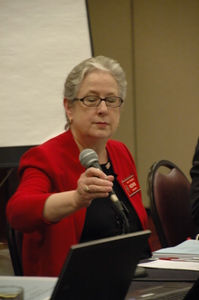
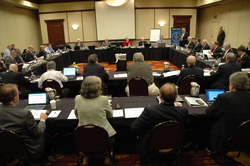
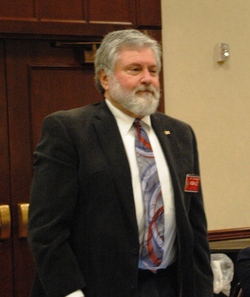
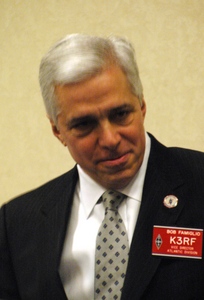
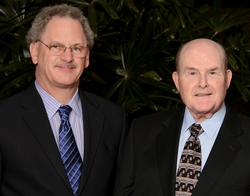
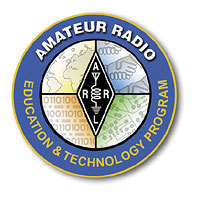 Station grants will go to the Banning Lewis ranch Academy in Colorado Springs, Colorado, and to Southport Elementary School in Kenosha, Wisconsin. Banning Lewis Academy wants to set up an Amateur Radio station at the school for a club formed within the past year. Eleven students already have become licensed and have participated in the ARRL
Station grants will go to the Banning Lewis ranch Academy in Colorado Springs, Colorado, and to Southport Elementary School in Kenosha, Wisconsin. Banning Lewis Academy wants to set up an Amateur Radio station at the school for a club formed within the past year. Eleven students already have become licensed and have participated in the ARRL 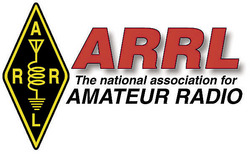 The ARRL expressed support for the status quo regarding an allocation to the Mobile Service for broadband applications at 3400-4200 MHz and 4500-4800 MHz, which is under consideration as part of Agenda Item 1.1 at WRC-15. The 3400-3500 MHz segment is allocated on a secondary basis to the Amateur Service in ITU Regions 2 and 3, with a secondary allocation by footnote in some countries in ITU Region 1. The League said advocates for the allocation have failed to account for the protection of existing services.
The ARRL expressed support for the status quo regarding an allocation to the Mobile Service for broadband applications at 3400-4200 MHz and 4500-4800 MHz, which is under consideration as part of Agenda Item 1.1 at WRC-15. The 3400-3500 MHz segment is allocated on a secondary basis to the Amateur Service in ITU Regions 2 and 3, with a secondary allocation by footnote in some countries in ITU Region 1. The League said advocates for the allocation have failed to account for the protection of existing services..png) The ARRL supported the FCC WAC view on Agenda Item 1.12 that the US not be added to international footnote 5.480 -- basically an exception -- to the Table of Allocations that could make part of the 10.0-10.5 GHz segment vulnerable to additional allocation for Fixed Service applications. The Amateur and Amateur-Satellite services have a secondary allocation in the band, and the Federal Radiolocation Service is primary. The proposed "footnote amendment," the League argued, "plainly, clearly, and indisputably contradicts existing United States regulations." The League's comments accused Mimosa Networks, which has argued in favor of having the US sign on to the international footnote, of advancing an "illogical construction to obtain the result it desires."
The ARRL supported the FCC WAC view on Agenda Item 1.12 that the US not be added to international footnote 5.480 -- basically an exception -- to the Table of Allocations that could make part of the 10.0-10.5 GHz segment vulnerable to additional allocation for Fixed Service applications. The Amateur and Amateur-Satellite services have a secondary allocation in the band, and the Federal Radiolocation Service is primary. The proposed "footnote amendment," the League argued, "plainly, clearly, and indisputably contradicts existing United States regulations." The League's comments accused Mimosa Networks, which has argued in favor of having the US sign on to the international footnote, of advancing an "illogical construction to obtain the result it desires.".jpg) burst steam pipe. Cell telephones and the 800-900 MHz digital Multi-Agency Radio Communication System (MARCS) remained functioning.
burst steam pipe. Cell telephones and the 800-900 MHz digital Multi-Agency Radio Communication System (MARCS) remained functioning.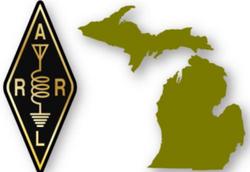 The most pertinent language in the new Michigan law, which comes directly from §97.15 of the FCC Amateur Service rules, states:
The most pertinent language in the new Michigan law, which comes directly from §97.15 of the FCC Amateur Service rules, states: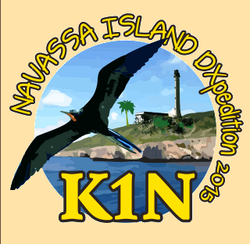 not permit another operation for at least 10 more years. The team said its exact departure date will not be determined until the last minute and will depend on the USFWS and on weather conditions. The team will arrive at its staging point a few days before the earliest possible departure window and will be ready for rapid deployment to Navassa.
not permit another operation for at least 10 more years. The team said its exact departure date will not be determined until the last minute and will depend on the USFWS and on weather conditions. The team will arrive at its staging point a few days before the earliest possible departure window and will be ready for rapid deployment to Navassa.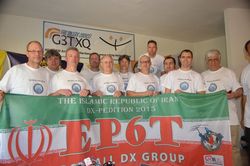
 will take advantage of additional launch opportunities this year and next. The Fox-1B satellite is scheduled to fly next year. Fox-1C will launch during the 3rd quarter of 2015.
will take advantage of additional launch opportunities this year and next. The Fox-1B satellite is scheduled to fly next year. Fox-1C will launch during the 3rd quarter of 2015.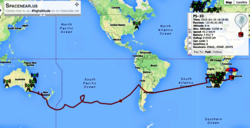
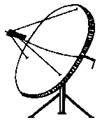 VHF/UHF/Microwave Conference Seeks Speakers and Papers: The 41st
VHF/UHF/Microwave Conference Seeks Speakers and Papers: The 41st  ITU Management Team Inaugurated: The new management team of the International Telecommunication Union (
ITU Management Team Inaugurated: The new management team of the International Telecommunication Union (.jpg) Amateur Radio Newsline Assumes Low Profile as Editor Recuperates: The long-running
Amateur Radio Newsline Assumes Low Profile as Editor Recuperates: The long-running  Intrepid DX Group Announces Intrepid Spirit Award Recipient: The
Intrepid DX Group Announces Intrepid Spirit Award Recipient: The  Geomagnetic numbers indicated more stable conditions, with the average daily planetary A index declining from 9.6 to 6.4, and the average daily mid-latitude A index dropping from 8 to 4.7.
Geomagnetic numbers indicated more stable conditions, with the average daily planetary A index declining from 9.6 to 6.4, and the average daily mid-latitude A index dropping from 8 to 4.7.







